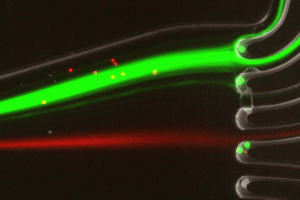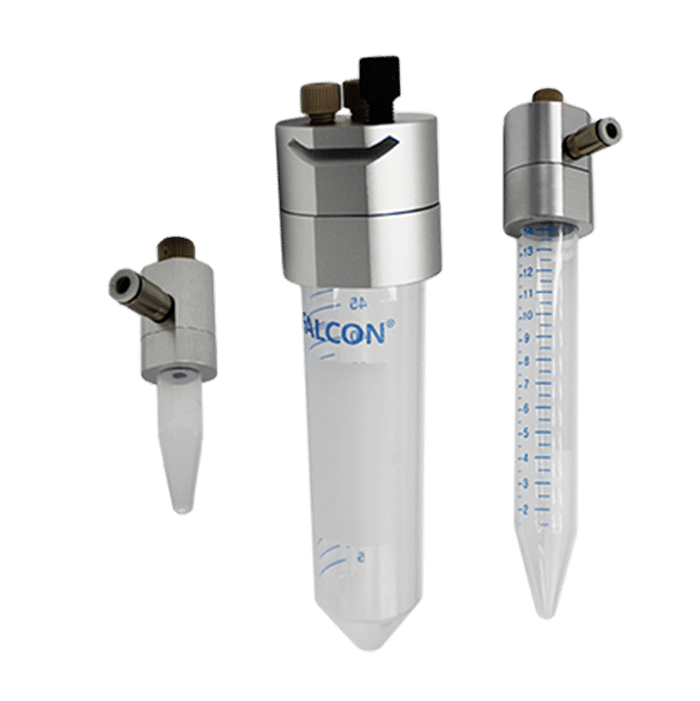Label-free analysis
Electrical Impedance Spectroscopy Pack
A complete system to start EIS experiments
Electrical impedance spectroscopy (EIS) is a technique that guarantees fast throughput and label-free sensing so that it can be used to characterize electrical properties, size, or morphology of cells in microfluidic devices. Fluigent and Zurich Instruments drew on their expertise to propose a complete solution for EIS in microfluidics. Our EIS Pack is designed to elevate your research and experimentation to new heights, offering unparalleled accuracy and reliability in impedance measurements. Dive into a world of detailed analysis and insightful data with our cutting-edge solution.
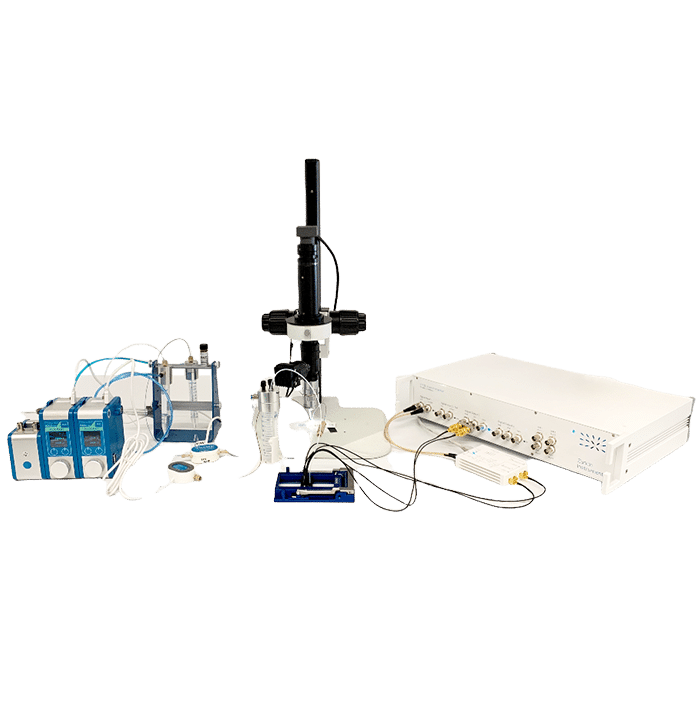
- Save time
- Flexible
Wide range of analysis tools
- Cost-effective
Small sample volumes
Features of Electrical Impedance Spectroscopy Pack
Microfluidic Integration
Experience seamless integration with other analysis methods, such as optical detection. Our EIS instruments enable simultaneous multi-frequency measurements, offering enhanced flexibility in your research.
Complete EIS system
Unlock the full potential of electrical impedance spectroscopy with our comprehensive system. Equipped with all the essential fluidic components, our system provides everything you need to initiate EIS experiments promptly and efficiently.
Engineered for Precision
Our package is meticulously engineered with precision in mind. From pressure controllers to microfluidic chips, each component is thoughtfully designed to ensure optimal performance and reliable results.
Customization Options
Tailor the EIS Pack to meet your specific requirements. Our customizable solutions empower you to adapt the package according to your unique needs, ensuring a perfect fit for your research objectives.
Related applications
How Electrical Impedance Spectroscopy Works
What is the Electrochemical impedance spectroscopy ?
EIS is a well-established method with widespread applications in various scientific and technological fields. In recent years, it has become a cornerstone in biochemical and medical applications, proving to be a sensitive technique for detecting and measuring biochemical and biological events.
- Applications: EIS can be utilized for sensing antigen–antibody complexes formation, immunosensing, DNA characterization, detection of DNA hybridization, and characterizing living cells.
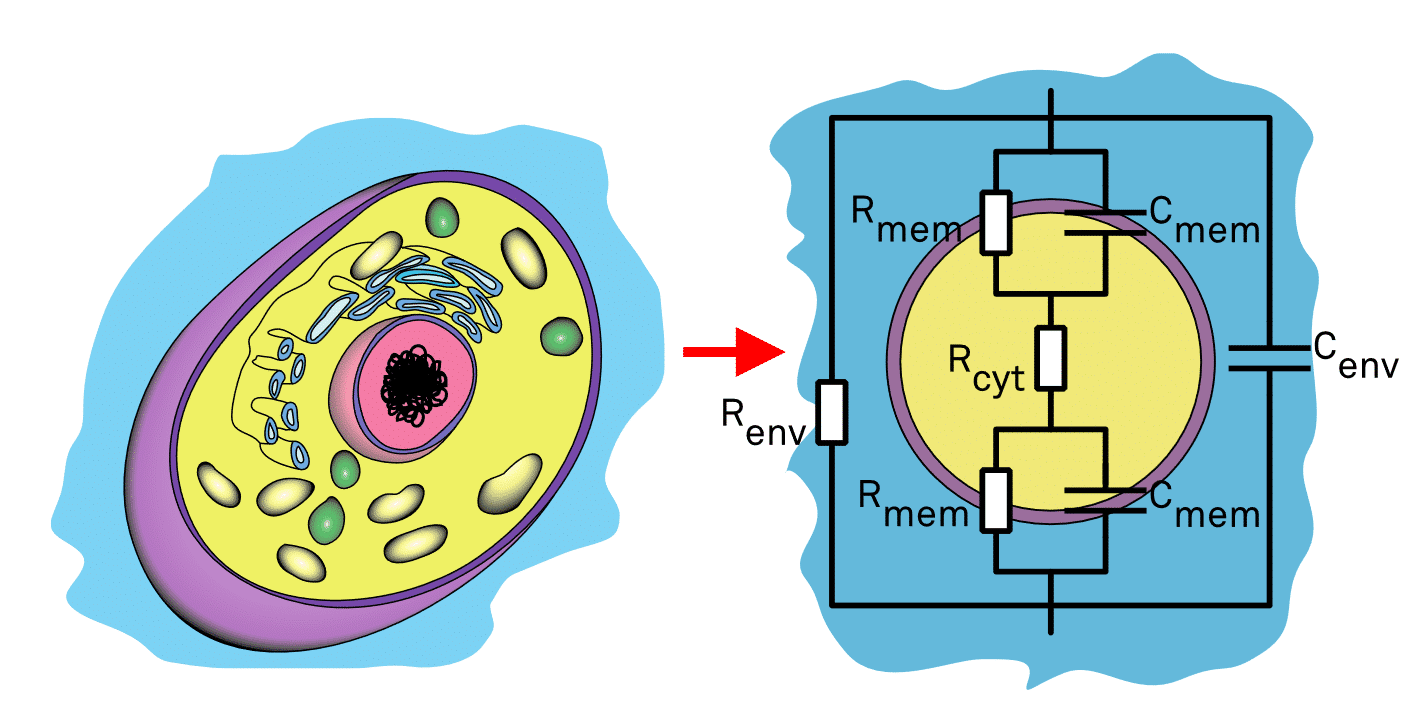
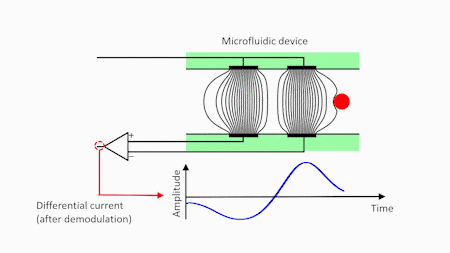
The combination of the EIS and microfluidics technologies
By combining EIS with microfluidics, micromachining, and Microelectromechanical systems (MEMS) techniques, our EIS Pack becomes a valuable tool for biochip applications. This synergy facilitates easy and rapid characterization of bio-samples, addressing the need for automated methods in this domain.
- Label-Free Advantage: EIS is inherently label-free, simplifying the preliminary sample preparation for analysis.
- Microfluidic EIS Technique: This technique involves monitoring the frequency-dependent dielectric properties of the channel as cells pass through it, demanding both high sensitivity and fast response for accurate measurements. Experience the power of efficient and label-free bio-sample characterization with the Microfluidic EIS technique.
Elevate your research capabilities with the precision, flexibility, and adaptability offered by our Electrical Impedance Spectroscopy Pack. Uncover the intricate details of your samples with confidence and ease.
As the analyte enters and exits the differential electrode pairs in a microfluidic chip, peaks and troughs in current are observed. With a differential input, the signal from the surrounding fluid is suppressed, enabling the resolution of each cytometry event with reduced noise. This cutting-edge technology and the scientific advances that accompany it are the reasons why Fluigent created the EIS Pack.
EIS Applications
Harness the power of continuous flow microfluidic devices, featuring embedded microelectrodes for precise electrical measurements. This cutting-edge technology excels in the high-throughput detection and classification of single cells or particles, including beads and droplets.
Further, since the dielectric properties of a biological cell are defined by its cellular characteristics such as cell volume, composition and architecture, impedance spectroscopy can be used to differentiate between cell types.
The integration of impedance spectroscopy, coupled with our advanced Electrical Impedance Spectroscopy pack, allows for the measurement and fitting of the cell’s frequency response to an equivalent circuit model.
This facilitates the extraction of quantitative measurements related to various cell properties, such as membrane thickness and cytoplasm conductivity.
Moreover, our EIS technology enables precise droplet analysis, encompassing droplet size, counting, and cell-in-droplet quantification.
Han, Z. et al (2020) proposed a microfluidic impedance flow cytometry device with a constriction microchannel for simultaneously characterizing the mechanical and electrical characters of plant cells at the single-cell level.
Particularly, by using the EIS system together with impedance analyzers from Zurich Instruments, two characteristic parameters, passage time and impedance opacity, were extracted as biophysical parameters to specify the deformability and membrane electrical property of single plant cells, respectively.
Collectively, within the Electrical Impedance Spectroscopy pack, this study delivers a high-throughput system for the rapid and sensitive biophysical characterization of plant cells at the single-cell level. Furthermore, it envisions the development of more robust biosensors for single-cell phenotyping, offering a complementary perspective to traditional approaches and providing a comprehensive understanding of gene functions.
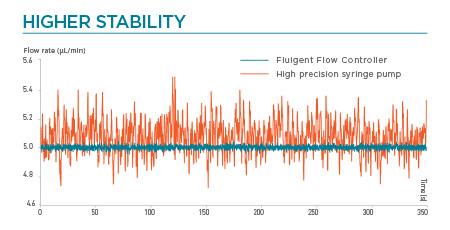
Benefit of the most advanced pressure-based flow control technology
Control flow rate with the benefits of responsive, pulse free flow
Pulse-free flow is critical for generating high quality and repeatable results. The Flow EZ™ integrates the all-new DFC (Direct Flow Control) algorithm which allows the user to set a flow rate directly on the instrument display. The applied pressure will automatically adjust to maintain the flow rate.
A response time ten times faster compared to mechanical solutions
With the use of pressure instead of mechanical action, the Flow EZ gets responsiveness ten times faster than syringe pumps. A low response time allows one to quickly execute operations such as stop flow and pressure/flow rate steps.
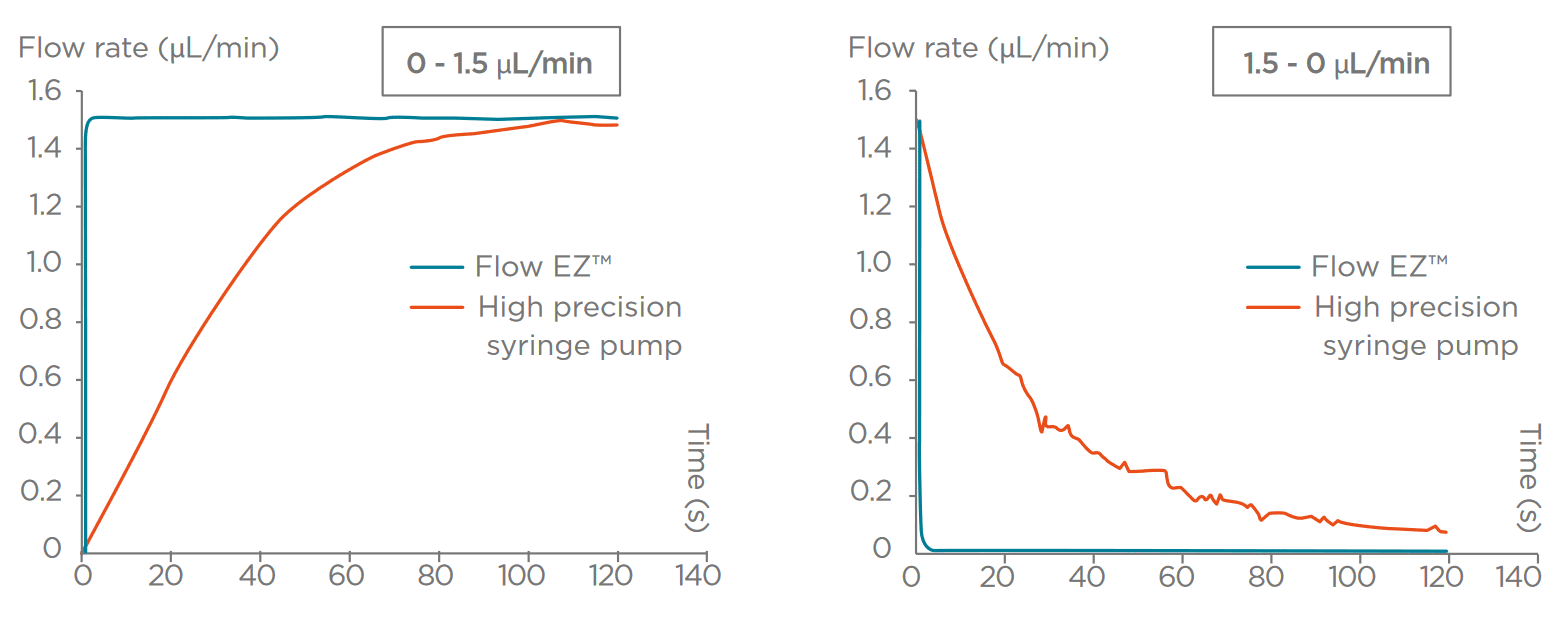
Webinar – Fast Electrical Impedance Spectroscopy for Characterization and Counting
In this webinar, we present an EIS system consisting of a lock-in amplifier and microfluidic flow controllers and put it to work on detecting microbeads and water-in-oil droplets.
Specifications
| LineUp Flow EZ pressure controller (2000 mbar) x2 |
| LineUp LINK Module (software control) x1 |
| FLOW UNIT M (x1) and L (x1) |
| Kit including all necessary tubing & fittings |
Additional items required for the Electrical Impedance Spectroscopy Pack (not included in Fluigent package)
| Fluidic Connect Pro for EIS chips (15x15mm) or a set of EIS insert when a chip holder is already available. (8 cable assemblies are included with the holder) from Micronit |
| HF2LI from Zurich Instruments |
| HF2TA from Zurich Instruments |
OxyGEN
| Control in real-time, protocol automation, data record and export |
| ver. 2.2.0.0 or more recent |
Software Development Kit
| Custom software application |
| ver. 22.2.0.0 or more recent |
Expertise & resources
-
Microfluidics Case Studies Success story of SEED Biosciences: Single cell impedance analysis Read more
-
Microfluidics Case Studies The Micro/Nano Bioelectronics and Biosensors (MBIOS) from Tianjin University Read more
-
Fluigent Products Datasheets FLOW UNIT Datasheet Download
-
Microfluidic Application Notes Impedance Measurement of Microbeads Read more
-
Expert Reviews: Basics of Microfluidics Extended Capabilities of Pressure Driven Flow for Microfluidic Applications Read more
-
Fluigent Products Datasheets Flow EZ™ Datasheet Download
Selected publications from our customers
Related products
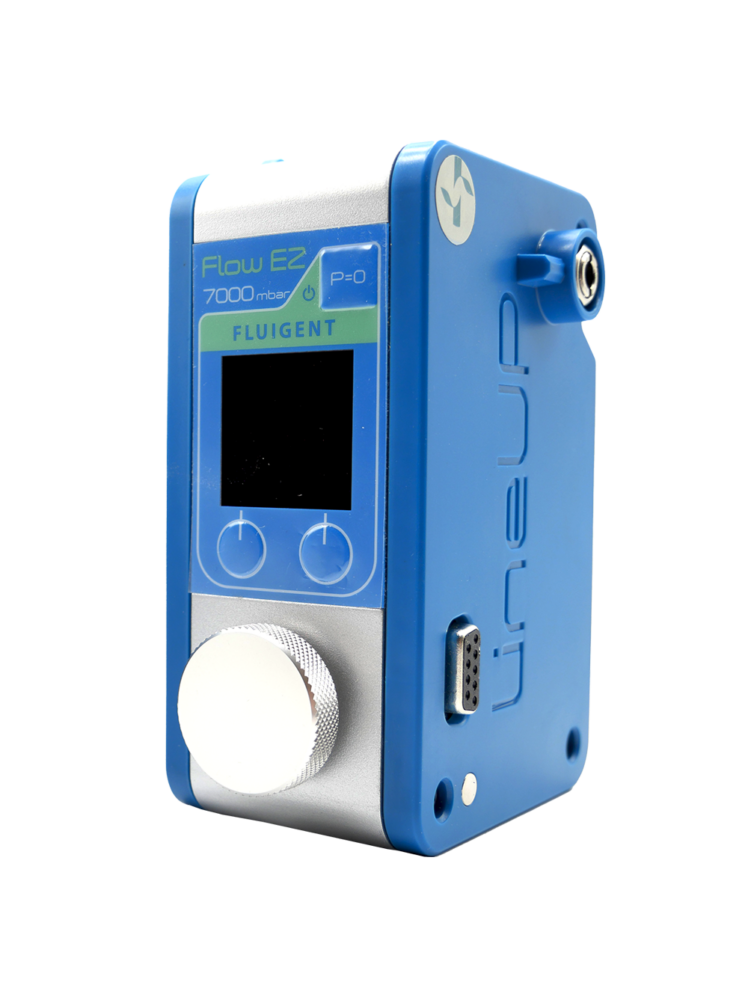
Microfluidic flow controller
Flow EZ™
See the offer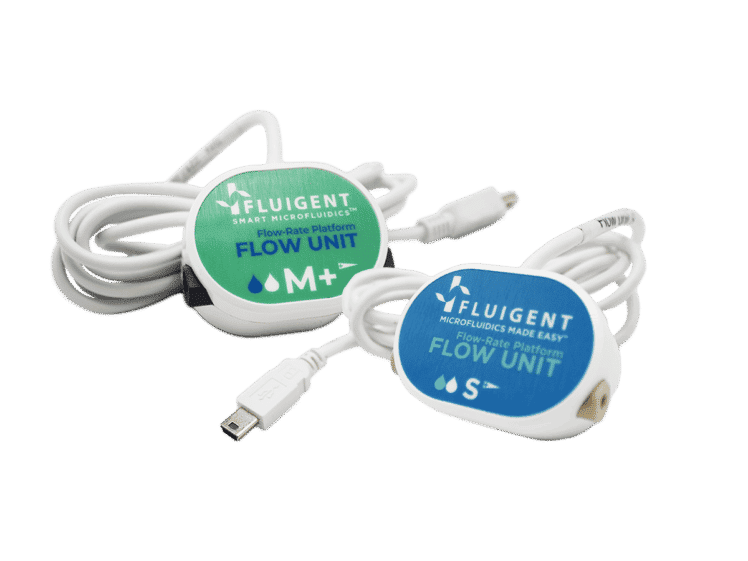
Bidirectional Microfluidic Flow Sensor
FLOW UNIT | FLOW UNIT +
See the offer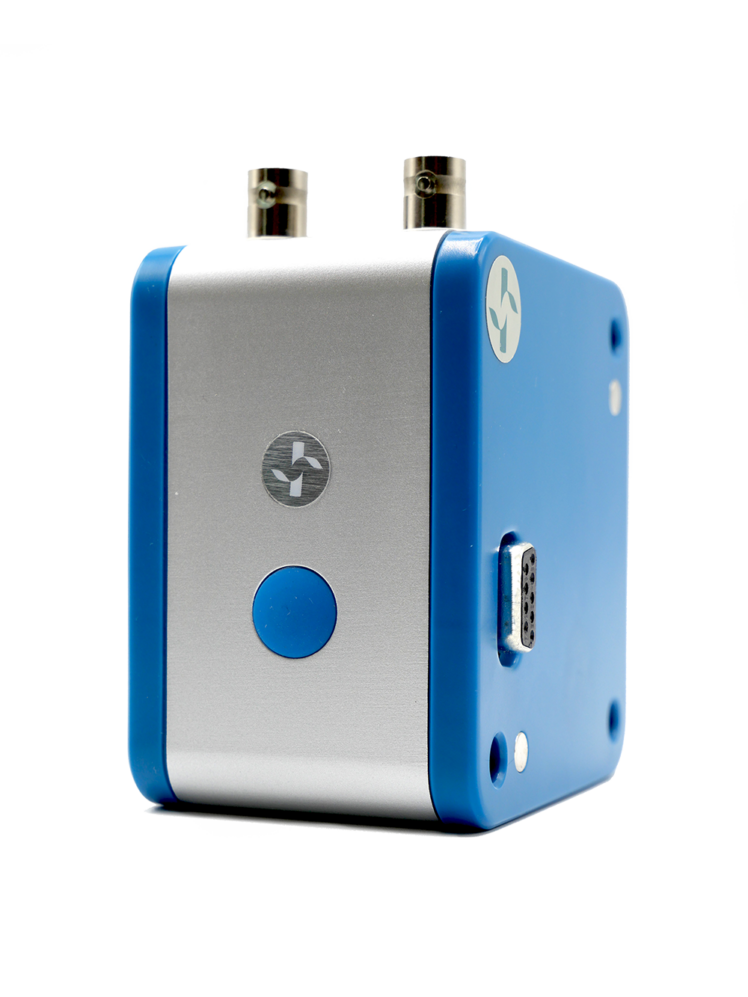
Microfluidic Software Control
Microfluidic Software control
See the offer
Real-Time Control & Lab Automation Software
OxyGEN – The new way to get full control of your microfluidic system and automate your lab setup.
See the offer
